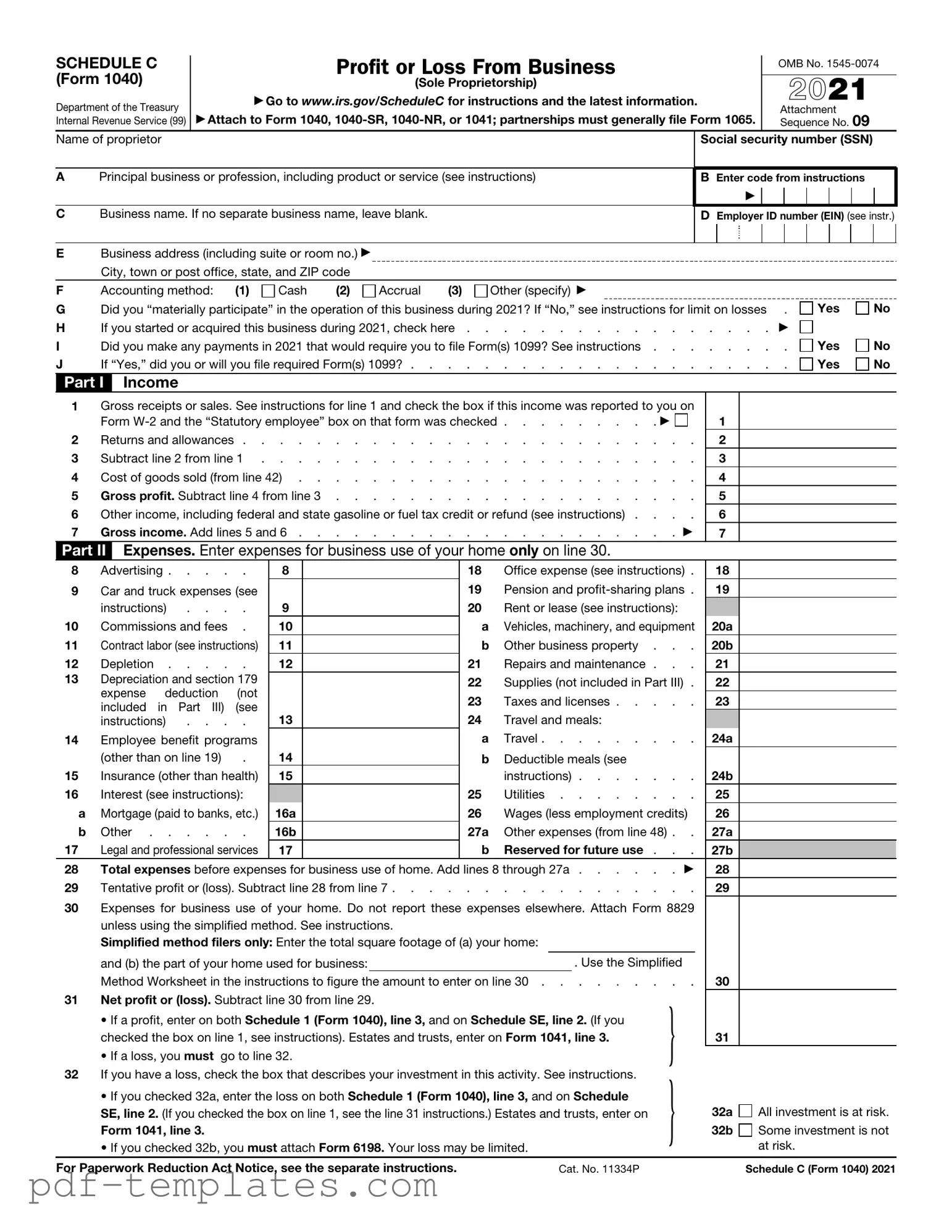The IRS Schedule C (Form 1040) is similar to the IRS Form 1065, which is used by partnerships to report income, deductions, and credits. Like Schedule C, Form 1065 provides a detailed breakdown of business income and expenses, allowing partners to understand their share of the partnership's financial activities. Both forms require a thorough accounting of income sources and allowable deductions, ensuring that all financial aspects are transparently reported. While Schedule C is tailored for sole proprietors, Form 1065 accommodates multiple partners, reflecting the collaborative nature of partnership businesses.
Understanding various tax forms is crucial for proper financial management, especially for those navigating income from diverse sources. Among these, the California Transfer-on-Death Deed form serves a significant purpose in estate planning; it enables property owners to simplify the transfer of their real estate to beneficiaries without going through probate. For those interested in broader documentation, thinking about tax forms in conjunction with estate planning documents can streamline the process. For more resources, check out All California Forms.
Another document akin to Schedule C is the IRS Form 1120, which is utilized by corporations to report their income and expenses. Similar to Schedule C, Form 1120 outlines the financial performance of a business over a specific period. Both forms require detailed reporting of revenue and expenditures, ensuring compliance with tax obligations. However, while Schedule C focuses on individual business owners, Form 1120 is designed for corporate entities, emphasizing the different structures and tax treatments applicable to each type of business.
The IRS Schedule C also shares similarities with the IRS Form 1040, specifically the main individual income tax return. While Schedule C is an attachment to Form 1040, it plays a crucial role in reporting self-employment income. Both documents work together to provide a comprehensive view of an individual’s financial situation, including wages, salaries, and business profits. The integration of Schedule C into Form 1040 allows taxpayers to combine their personal and business income into a single filing, simplifying the tax process for self-employed individuals.
Finally, the IRS Schedule E (Form 1040) is another document that resembles Schedule C in its purpose of reporting income and expenses. Schedule E is specifically designed for reporting supplemental income, such as rental income or income from partnerships and S corporations. Both forms require a detailed accounting of income sources and expenses, emphasizing the importance of accurate record-keeping. However, while Schedule C focuses on income derived from self-employment, Schedule E addresses passive income streams, highlighting the diverse nature of income sources that individuals may encounter.
